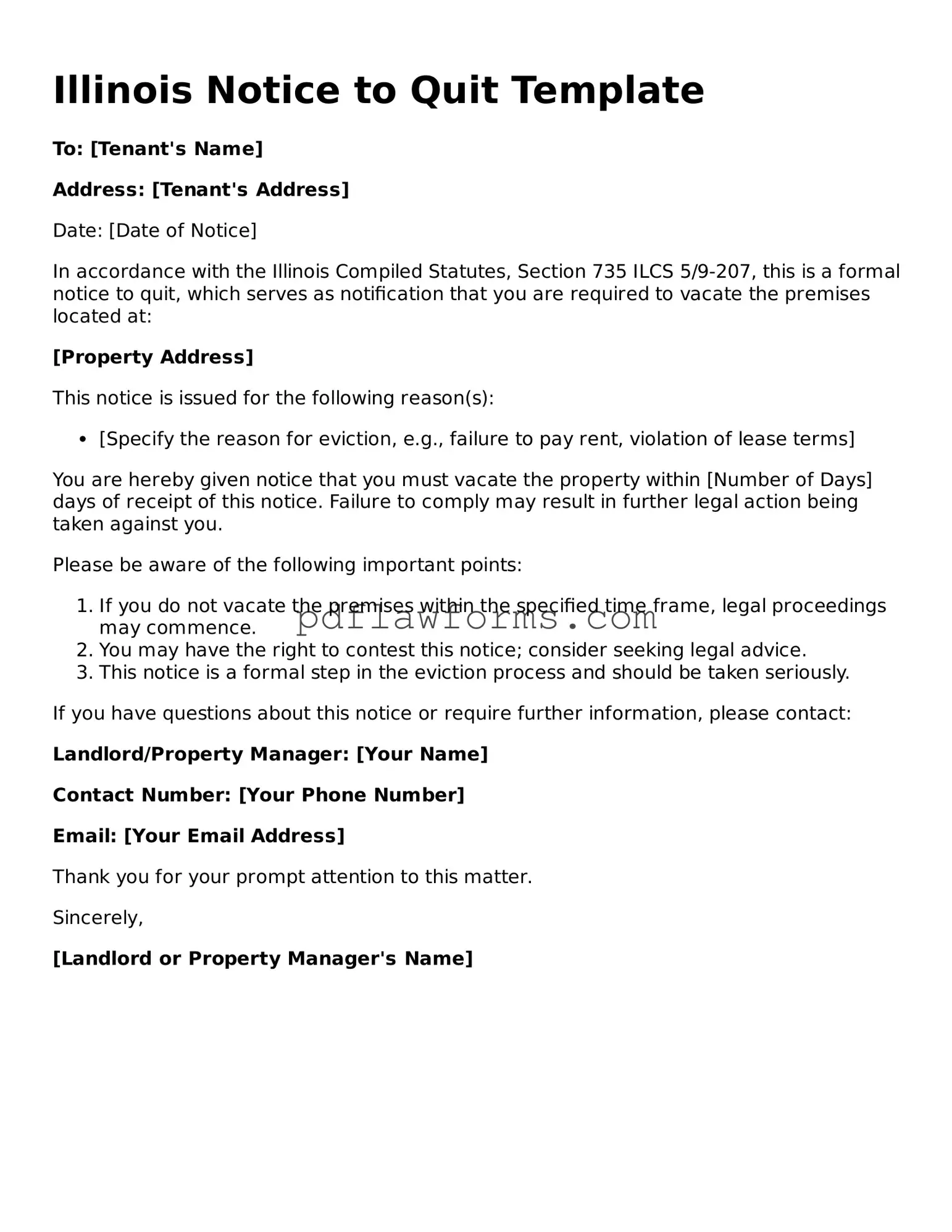Notice to Quit Form for the State of Illinois
The Illinois Notice to Quit form is a legal document that landlords use to notify tenants of their intent to terminate a lease agreement. This form serves as a formal request for tenants to vacate the rental property, typically due to non-payment of rent or lease violations. Understanding the nuances of this form is crucial for both landlords and tenants to ensure compliance with state laws.
To fill out the form, click the button below.
Make My Document Online
